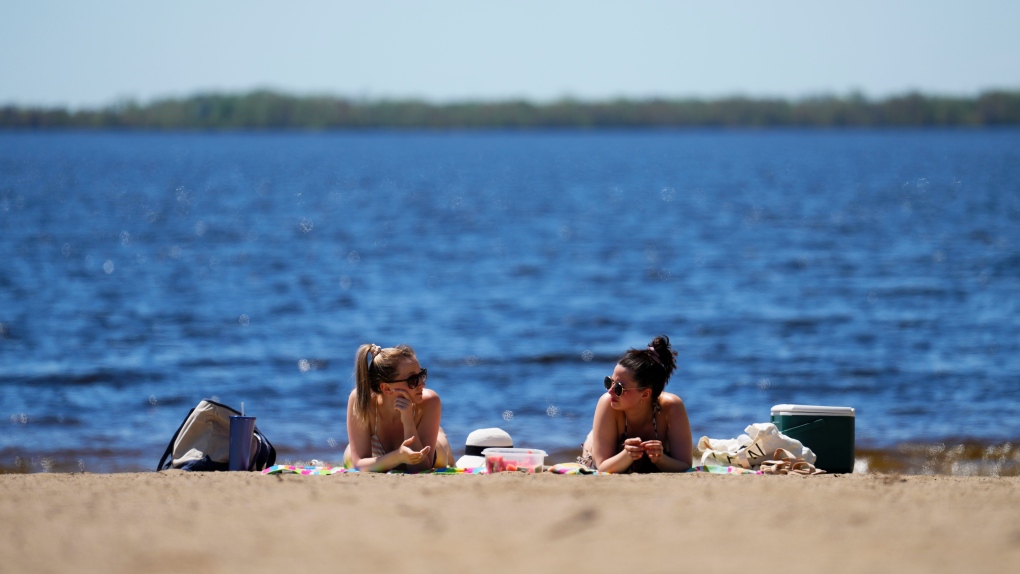
Canadians living in southern and coastal parts of the country are at higher risk of developing a deadly form of skin cancer, according to a new study led by McGill University, which also found that rates of this type of cancer are rising in Canada.
The population-based study, published on Monday in the peer-reviewed journal, Frontiers in Medicine, analyzed data from 2011 to 2017 for patients with cutaneous melanoma across all provinces and territories except Quebec. Researchers also looked at mortality trends over a seven-year period and compared it to previous data from 1992 to 2010.
Data showed that of the 39,610 patients diagnosed with this type of melanoma, 5,890 died. Females accounted for nearly 46 per cent of cases and just over 37 per cent of deaths. Notably, researchers found that mortality has also been declining since 2013.
Analysis also found that Prince Edward Island and Nova Scotia had the highest rates of cutaneous melanoma in the country, even when accounting for other factors like age. Rates in the prairie provinces and more northern parts of the country were lower than the Canadian averag
“The most important thing is that melanoma affects different regions differently,” Dr. Ivan Litvinov, an assistant professor in the Department of Medicine at McGill University, told CTVNews.ca by phone on Monday.
“The entire corridor from Windsor to Montreal – so southwestern Ontario, trekking all the way up to Ottawa, and especially the areas around the Muskoka Lakes are having higher levels of melanoma. And we see the same for all of Nova Scotia and PEI and certain coastal communities in New Brunswick. And it really is quite striking compared to Northern Ontario and Newfoundland or other areas in Canada.”
The coastal communities around south eastern B.C. also show a spike.
WHERE DOES THE SKIN CANCER APPEAR?
Melanoma is more common than all other cancers combined, according to Litvinov, noting that there are 80,000 skin cancer diagnoses per year in Canada, 8,000 of which are melanomas.
“It’s really going up and up and up. Melanoma incidence is really marching on…In other words, every hour and six minutes, someone is being diagnosed with melanoma,” he said.
He and his colleagues found that in the early 2000s it was about 12 cases per 100,000 per year. Now, the national average is 20.75 cases per 100,000.
Along with these numbers, the study also found that melanoma affects men and women differently, appearing most often on the trunk of the body and head for men. In women, legs are the primary spot where melanoma strikes, followed by arms..
All subtypes of the melanomas are common among males, but researchers noted that acral lentiginous melanoma is more common in females and primarily affects the hands and feet. Litvinov theorized that this could be the result of nail salon practices and the use of treatment of acrylic nails with UV light.
LOWER MORTALITY RATE IN CANADA
Cutaneous melanoma causes more deaths than any other skin cancer, the study noted, accounting for 1.9 per cent of all cancer deaths in males and 1.2 per cent of all cancer deaths in females. Around the world, there were an estimated 290,000 new cases of cutaneous melanoma in 2018, with Australia, New Zealand, Norway, Denmark, Netherlands, Sweden and Germany seeing the greatest number of cases per capita.
Between 2008 and 2018, experts saw a 44 per cent rise in this kind of melanoma globally, along with a 32 per cent rise in mortality.
In Canada, the study found that while there were more diagnoses, the mortality rate has actually been declining since 2013.
“It’s a great success story,” said Litvinow. Like other wealthy countries, he noted that effective treatments like immunotherapies and other targeted therapies against melanoma are becoming increasingly available, with Canada among the leaders.
“The total mortality may be marching up because the incidence is marching up, but mortality per capita is starting to decrease because we now have treatments that provide up to 50 per cent survival for patients with advanced melanoma. Before, advanced melanoma was a death sentence. But now we’re able to turn it into a chronic disease just like diabetes or heart dysfunction.”
The unavailability of information from Quebec was an important limitation for this study, the paper’s authors noted. In addition, other potential limitations included some missing data and the risk of patient misclassification. The unavailability of certain information also limited researchers’ ability to look at other factors like socioeconomic and ethnic considerations that could also play a role.
“It is important to highlight that as Canada’s health-care system is a single-tier, funded and operated by the provincial governments, the data is collected with consistency, where each provincial and territorial cancer registry identifies tumors in its population by combining information from multiple sources,” the study noted.
BEHAVIOUR DRIVING INCREASE
Previous research has suggested that the ozone depletion as a result of climate change may be a factor in the increase in melanoma diagnosis. Researchers said that while that relationship has been well-established for decades, many other factors “interplay with the environment to determine the ultimate risk for this deadly disease.” Litvinov suggests more affordable travel to sun destinations, longer life expectancies that give people more time under the sun and more time to develop cancer, are among other contributing factors to the rise in skin cancer.
“Overall, we do know that the sun is addictive….We do know that when people are exposed to sun, there’s a natural release of endorphins and sunseekers are really addicted to this,” he said, adding that there are also evolutionary factors that play into our love for the sun.
“In today’s world, that really translates into a higher number of skin cancer, melanomas, photo aging, wrinkles of the skin. We actually want people to go out and enjoy the outdoors to the full, full potential. Just don’t get a tan.”








